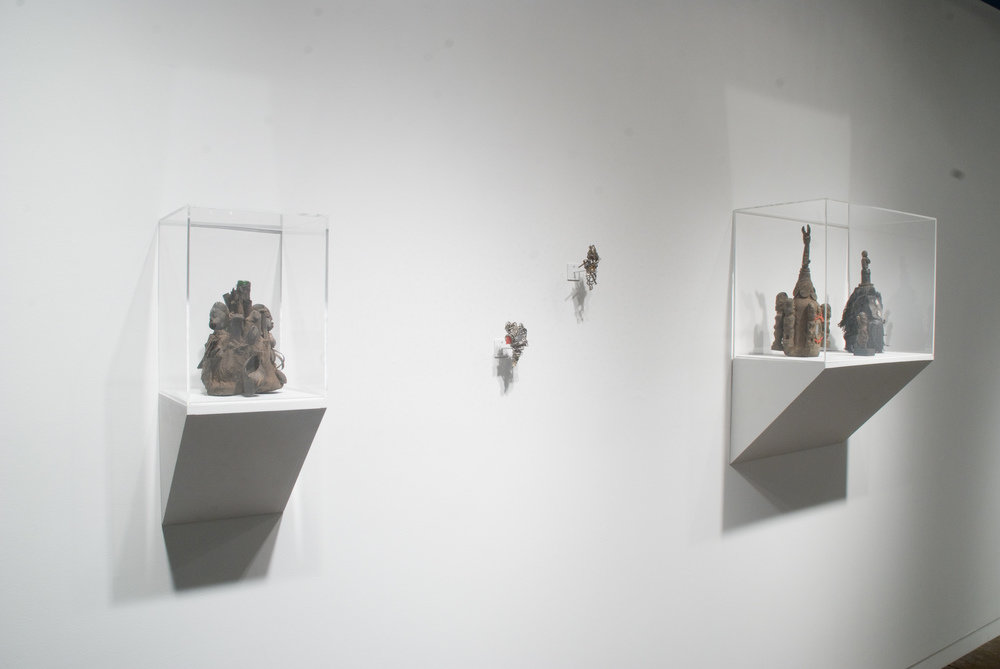Installation













Oct 19 — Dec 10, 2011
Featuring work by: Unknown (African), Emery Blagdon, Philadelphia Wireman
Fleisher/Ollman is pleased to announce Things That Do, an exhibition with African power objects, Emery Blagdon and Philadelphia Wireman.
Exhibition Dates: October 19- December 10, 2011 Reception: Wednesday, October 19 from 6-8pm
In the late 1970s a stockpile of over a thousand distinctive wire sculptures were found discarded on the street in a South Philadelphia neighborhood. The works mostly consist of different gauges of wire wrapped around everyday found objects and materials such as food packaging, umbrella parts, tape, pens, nuts and bolts, nails, foil, coins, toys, watches, eyeglasses, tools, and jewelry. Upon first seeing these captivating objects, gallerist John Ollman sensed that they embodied power and magic. Not only were batteries, switches, and electrical wire all obvious references to power, prevalent throughout the body of work, the objects' formal qualities, construction, and materials seemed to point to a possible relationship with African power objects, which are used throughout Western African and thought to contain spiritual powers.
Things That Do brings together these enigmatic works made by an unknown artist (named the Philadelphia Wireman by the gallery) with probable historical antecedents such as African nkisi, Fon Asen and Yoruba Osanyin Staffs, and with another body of work that embodies power and magic, Emery Blagdon's healing machine.
Accumulation, an African convention that relates to assemblage in mainstream modern art, is a defining feature of this group of works. The cast of insignificant and/or discarded materials bound together in each anthropomorphic Wireman strongly recalls the string, cloth, bones, iron objects, and shells that adorn and give power to Bochio figures. Made over the course of three decades, Blagdon's poetic healing machine is fashioned from all manner of small, quotidian components that mass into an environment. The use of metal is another prominent feature. Blagdon used baling wire to form elaborate objects resembling mobiles, chandeliers, or machines. With the same wire, Wireman created an exoskeleton for a unique and mysterious combination of objects housed within. In the African objects, iron plays a central role with metal birds, snakes, and locks symbolizing Vodun Gu, the god of iron and war. Aside from metal, there are many shared materials found throughout these works - mirror, glass, bits of color, beads, wood, and cloth. Each material or ornament has meaning and can be said, in various combinations, to give the object its needed power to operate according to its function, whether that be to heal, to protect, or to assure prosperity, fertility, or a season of good crops.
In form and function, there are strong resemblances and meaningful similarities. In every work, an aesthetic brilliance underscores utility, and the viewer senses an energy that is barely contained.
In conjunction with the exhibition, Fleisher/Ollman is pleased to announce the publication of Philadelphia Wireman. This fully illustrated catalog includes a foreword by John Ollman, an essay by Brendan Greaves, and was designed by Purtill Family Business.
Join us on November 10th at 7pm for a conversation between John Ollman and Richard Polsky in conjunction with the release of THE ART PROPHETS: The Artists, Dealers, and Tastemakers Who Shook the Art World.












